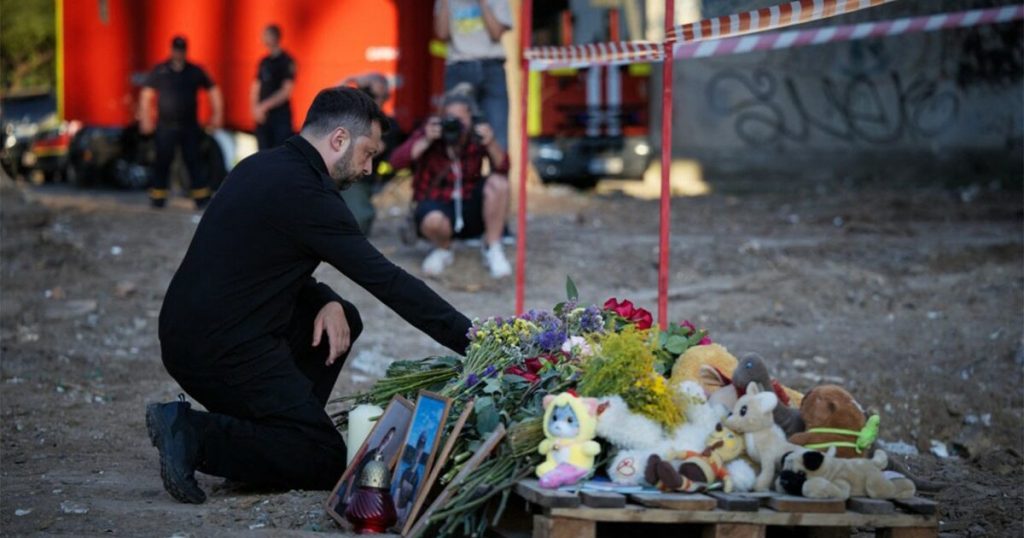The overnight hours witnessed a dramatic escalation of drone warfare across the Russia-Ukraine conflict zone, resulting in casualties and damage on both sides of the border. In western Russia, three separate drone strikes claimed the lives of three individuals and left two others wounded. The attacks targeted an enterprise in the Penza region, a residential house in the Samara region, and an industrial facility in the Rostov region. These incidents, confirmed by regional governors via Telegram, mark a significant escalation in the reach and impact of Ukrainian drone operations within Russian territory. The attacks triggered fires in several locations, adding to the destruction and chaos. The Rostov region, in particular, appeared to be a focal point, with the acting governor reporting a “massive air attack” repelled by the military, suggesting a coordinated assault involving multiple drones.
The Russian Ministry of Defence corroborated the intensity of the drone activity, claiming its air defense systems neutralized a staggering 112 Ukrainian drones over Russian territory during a nine-hour period spanning Friday night and Saturday morning. Of these, 34 were reportedly intercepted over the Rostov region alone. This claim underscores the escalating nature of the drone conflict, with both sides increasingly relying on unmanned aerial vehicles for offensive and defensive operations. The high number of intercepted drones highlights the intensity of the aerial engagement and the growing sophistication of Ukrainian drone tactics. While Russia claims successful interception, the penetration of its airspace by such a large number of drones raises concerns about the effectiveness of its air defense network.
On the Ukrainian side, the central-eastern Dnipropetrovsk region bore the brunt of Russian drone attacks, resulting in three injuries. The attacks, confirmed by the regional governor, also caused damage to several buildings, homes, and vehicles. This region has become a contested area, with Russian forces claiming recent advances and the capture of two villages, a claim disputed by Kyiv. These conflicting narratives underscore the ongoing struggle for territorial control and the strategic importance of the Dnipropetrovsk region in the overall conflict dynamics. The continued use of drones by both sides in this region highlights the evolving nature of warfare and the increasing reliance on unmanned aerial vehicles to achieve tactical and strategic objectives.
The recent escalation of hostilities comes against the backdrop of stalled peace negotiations and entrenched positions on both sides. Russian President Vladimir Putin reiterated his desire for peace but maintained his unwavering demands for ending the conflict, which include Ukrainian territorial concessions and the abandonment of NATO aspirations. These demands remain a significant stumbling block in any potential peace talks, as Ukraine remains steadfast in its commitment to territorial integrity and its right to pursue its own foreign policy course. The ongoing exchange of drone attacks underscores the deep mistrust between the two sides and the significant challenges in achieving a negotiated settlement.
Ukrainian President Volodymyr Zelensky, in turn, placed the onus of ending the war squarely on Putin’s shoulders, emphasizing the need for direct dialogue between the two leaders. Zelensky highlighted a US proposal for such a meeting, which Ukraine has supported, but lamented the lack of reciprocation from Russia. This call for direct engagement reflects Ukraine’s desire to find a diplomatic solution to the conflict, but the absence of a positive response from Moscow underscores the deep impasse and the difficulty in bridging the divide between the warring parties. The continued reliance on military solutions, as evidenced by the escalating drone warfare, further complicates the prospects for a peaceful resolution.
The exchange of drone strikes signifies a dangerous escalation in the ongoing conflict, blurring the lines of the battlefield and extending the reach of hostilities deeper into both countries. The increasing frequency and intensity of these attacks raise concerns about the potential for further escalation and the humanitarian consequences for civilian populations. While both sides continue to pursue military objectives, the urgent need for a diplomatic solution remains paramount. The divergent positions on key issues, however, present a formidable challenge to achieving a lasting peace, leaving the future trajectory of the conflict uncertain and fraught with peril. The reliance on drone technology underscores the changing nature of modern warfare, highlighting the challenges and risks associated with this evolving form of conflict.














